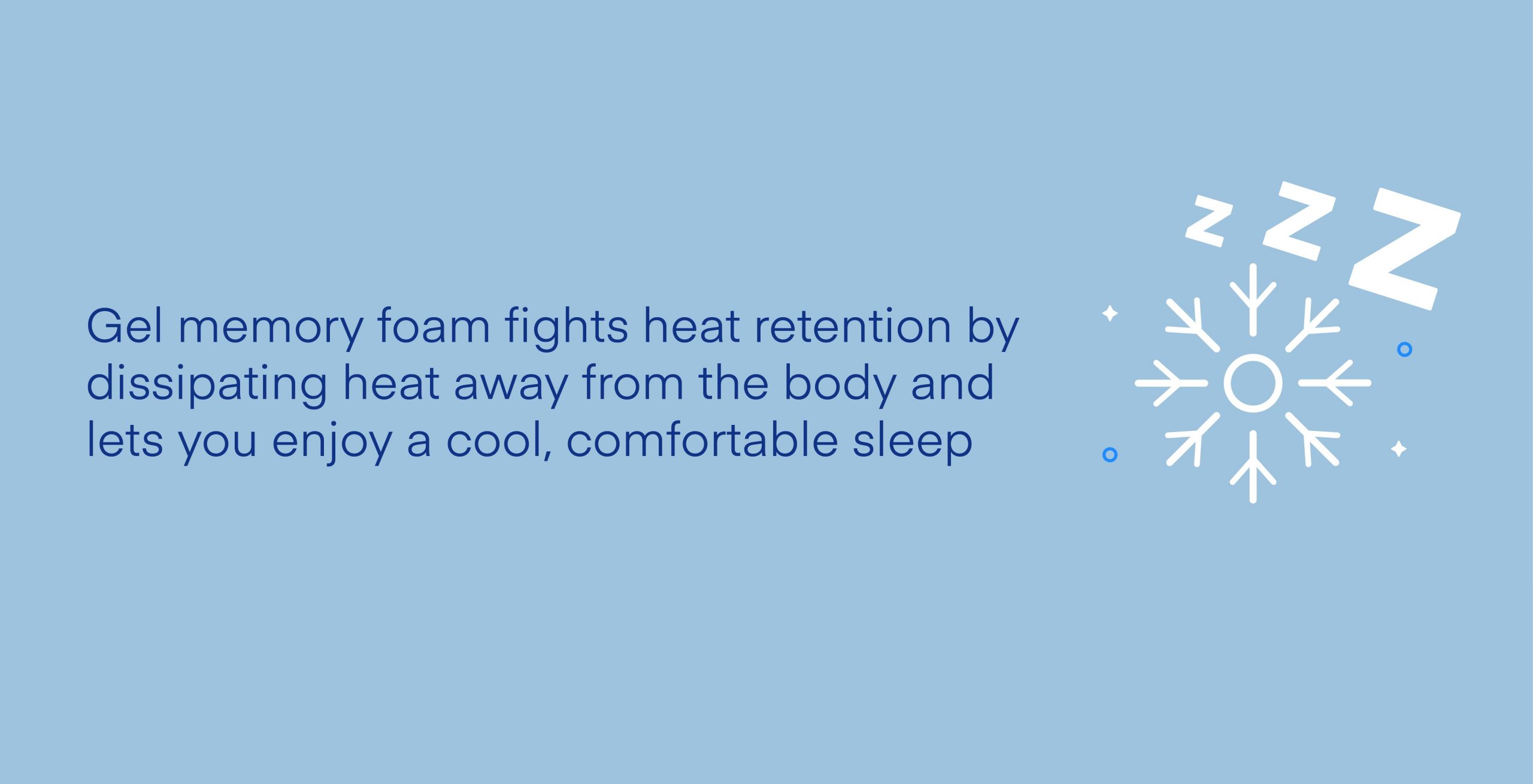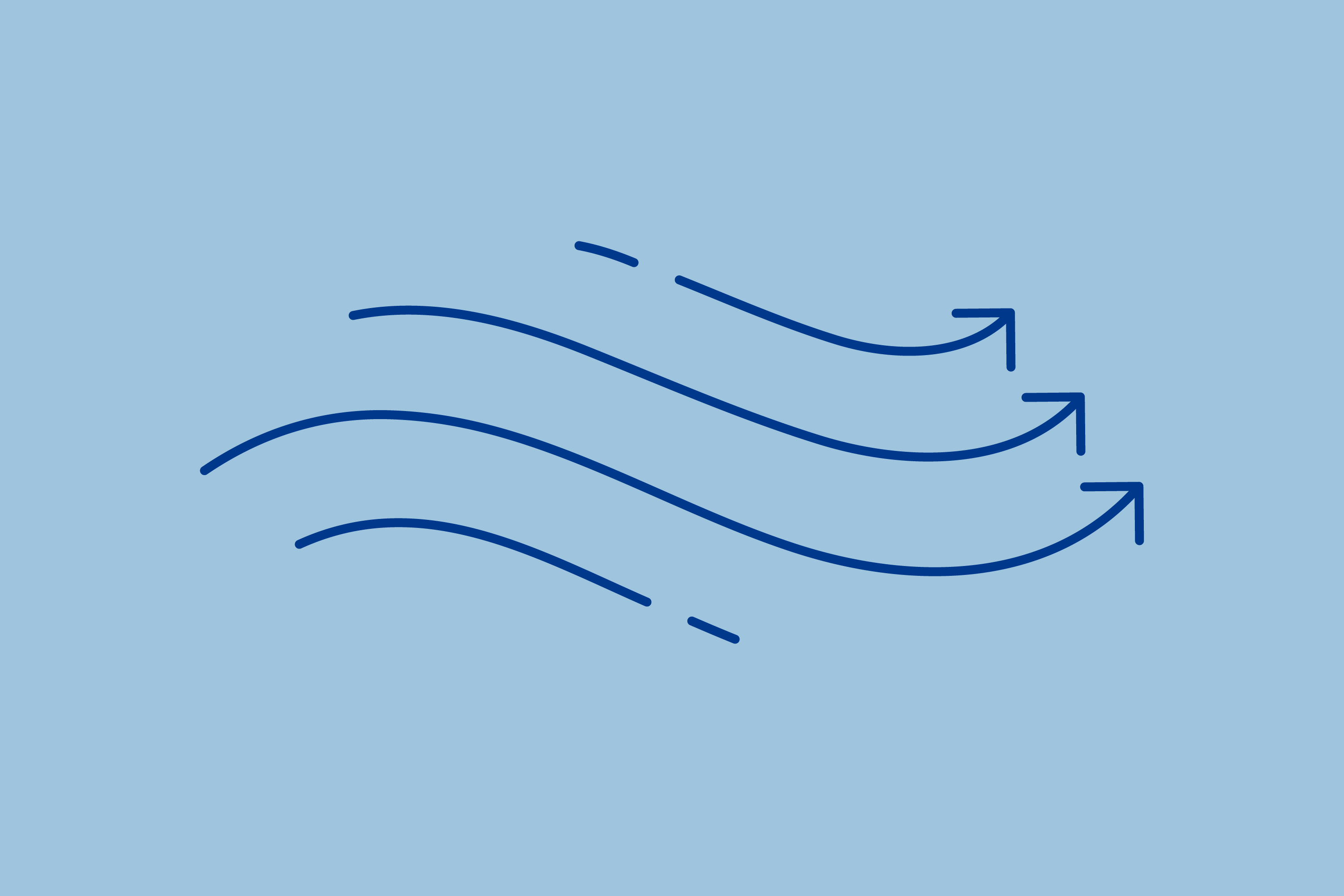Who can resist the cool feeling of gel, especially when it comes infused in your mattress? Memory foam mattresses rose in popularity because of its body-conforming and pressure-relieving features, but its tendency of retaining heat has been disturbing hot sleepers.
To address this concern, mattress manufacturers came up with the concept of the gel-infused memory foam mattress. This type of mattress has all the advantages of memory foam, or viscoelastic foam but keeps sleepers cool by absorbing body heat.
Gel Memory Foam Versus Traditional Memory Foam
Both gel memory foam and traditional memory foam have body-conforming, pressure-relieving qualities. Gel memory foam, however, has the inclusion of gel microbeads to combat heat retention and keep you sleeping cool.
Traditional Memory Foam
Traditional memory foam mattresses first appeared in the 1990s. When you lie on a memory foam mattress, your body heat softens the memory foam, causing it to form around your body and relieve pressure points. The plush surface provides comfort and support for all types of sleepers. Memory foam evenly distributes weight across the surface for enhanced lumbar support and pain relief.
Memory foam also limits motion transfer. Each cell works as a shock-absorber limiting the transfer of motion from one side of the bed to the other. So if you are co-sleeping, this feature of motion isolation is a big advantage. If you, your partner, or kids are in the habit of tossing and turning around at night, a mattress for motion isolation will ensure that no one gets disturbed due to movement.
The dense structure of memory foam may cause overheating, restricted airflow, and heat retention. As a result sleeping on a traditional memory foam mattress might leave you feeling hot and sweaty.
Gel Memory Foam
Gel memory foam came to the market in 2011. While it has all the advantages of traditional memory foam, gel memory foam fights heat retention by dissipating heat away from the body and lets you enjoy a cool, comfortable sleep.
Gel contains “phase-changing materials”, known as PCMs. These materials absorb or release latent heat when they go through a change in their physical state, from solid to liquid or vice-versa. Gel absorbs heat while converting from solid to a liquid state.
Gel is infused in the memory foam mattress in various ways. Sometimes, it is present as microbeads or swirled in the memory foam.
Other Memory Foam Types
Since its introduction in the mattress market, memory foam has evolved over the past three decades. While there are many advantages of this temperature and pressure-sensitive viscoelastic foam, its heat retention troubles hot sleepers. To deal with this concern, mattress manufacturers have come up with several innovative variations.
Open-Cell Memory Foam
Open-cell memory foam helps in improving breathability and beats the effects of heat retention as experienced in the traditional memory foam mattress. Traditional memory foam is injected with large amounts of air to create more air pockets inside its structure for better airflow. This makes the mattress cooler and also improves its recovery time. Once you get off the bed, the mattress is quicker in coming back to its original shape than the traditional memory foam.
Plant-Based Memory Foam
Plant-based memory foam is made by partially replacing petroleum with plant-derived oils. These mattresses have an open-cell structure to enhance breathability, and the presence of natural plant-derived oils makes it cooler compared to traditional memory foam mattresses. The addition of plant-derived oils prevents off-gassing that is commonly seen in memory foam mattresses.
Off-gassing refers to the release of gas, chemicals, and Volatile Organic Compounds (VOCs) into the air from cleaning products, mattress flame retardants, and other building construction materials. This is the familiar smell of chemicals that you might experience in a newly painted room, a new mattress, sofa, or car. The addition of plant-derived oils diminishes chemical use in these plant-derived memory foam mattresses, so they have little to almost no off-gassing.
Copper- and Graphite-Infused Memory Foam
This is another segment in memory foam, wherein a layer of natural products are infused in the memory foam. Minerals like graphite and copper and other natural elements like green tea extracts are now finding their way to memory foam mattresses. The infusion of these layers keeps the advantages of traditional memory foam intact while tackling heat retention.
Copper and graphite are known for their excellent thermal conductivity. They attract heat and dissipate it away from its source, working as a good coolant. Copper’s antimicrobial, antibacterial, and antiviral properties also make it a good addition to the mattress and a great choice for those with allergies. Graphite is also a natural fire retardant, so mattresses with graphite do not need to use harsh chemicals in their flame retardants.
Copper and natural green tea extract both work as natural deodorizers. They absorb bad smells and ensure a cool, refreshing sleep environment.
What to Consider in a Mattress
Choosing the best mattress can be a daunting task. Analyzing determinants like quality, firmness, sleeping position, bedding accessories, and sleep trials, return policies, and warranties can be a good way to give you a headstart when shopping for the perfect mattress.
Quality
This is the most important factor in your mattress, which decides how comfortable you are on it and how durable the mattress is going to be. So when shopping for a mattress, do not compromise on the quality of the foam. Always opt for high-quality foam that will give you the ideal support that you are looking for in a bed.
Foam Density
Understanding foam density helps you understand your mattress in depth. Density is measured in pounds per cubic foot (PCF) and determines how well the mattress is going to support your body weight. Memory foam density is categorized into three grades: low, medium, and high.
- Low-density: 2.5 PCF to 3.9 PCF
- Medium-density: 4.0 PCF to 4.9 PCF
- High-density: 5.5 PCF or higher
Higher density foam is better at providing support and conforming to your body, plus it’s more durable, but it also traps more heat. Low-density foam is more responsive, recovers faster, and doesn’t trap heat.
The top memory foam layer is the comfort layer which usually has a foam density ranging from 2.5 pounds per cubic feet to 8 pounds per cubic feet. Most memory foam mattresses have a mix of low-density and high-density foam.
ILD Rating
This determines the firmness of your memory foam mattress. Indentation Load Deflection (ILD) measures the amount of pressure required to make a four-inch indentation on the surface of a mattress. High ILD indicates a firmer mattress, while lower ILDs indicate softer beds. Most memory foam mattresses have a top comfort layer ranging within ILD rating of 8 and 20, wherein the range of 8-10 is considered extremely soft, 11-15 very soft, and 16-21 soft.
Firmness
Your body weight determines the firmness level of the bed that is most suitable for you. Different body types need different firmness options to feel comfortable, which in turn can ensure a good night’s sleep.
Light
Light-weight sleepers are those weighing less than 130 pounds. They require a softer mattress to ensure it conforms to their body and provides pressure relief; this way they can reap all of the benefits of a memory foam mattress.
Average
Average sleepers are those weighing between 130 to 230 pounds. They require a medium level of softness to provide ideal comfort to their bodies.
Plus-Size
Plus-size sleepers are those weighing more than 230 pounds. They need a firmer mattress to avoid uncomfortable sinkage and feeling “stuck” in the mattress.
Sleeping Position
Different individuals have different preferences for sleeping positions. While some are comfortable sleeping on their sides, others prefer back or stomach, and some sleepers will snooze in a variety of positions— we refer to this as combination sleeping.
Side Sleeping
The best mattresses for side sleepers are typically medium in firmness because these beds offer enough comfort to prevent pressure under the shoulders and hips but are still firm enough to maintain healthy spinal alignment. Their body weight gets evenly distributed across the surface of the bed, providing pressure-point relief, especially in the hip and shoulder regions.
Back Sleeping
Back sleepers need a mattress to promote spinal alignment and prevent the hips from sinking too far. Depending on body weight, back sleepers can be comfortable on medium-soft to medium-firm beds.
Stomach Sleeping
We recommend firm mattresses for stomach sleepers because they keep the torso lifted and prevent the back from arching unnaturally. Stomach sleepers can also benefit from choosing a good mattress for back pain relief to prevent chronic discomfort later on down the line.
Combination Sleeping
Medium mattresses are best for combination sleepers because they offer a good mix of comfort and support and can accommodate the majority of sleeping positions.
Bedding Accessories
There are several bedding accessories to enhance your sleep experience, including mattress toppers, pads, and protectors.
Mattress Toppers
Mattress toppers are an extra layer added to your mattress to enhance its comfort, durability, and general wear and tear. They are usually 2 to 15 inches deep and are available in different materials, such as latex, memory foam, and gel memory foam. If you don’t want to invest in a gel memory foam mattress, then you can start by trying out a gel memory foam mattress topper. Toppers can give you an idea of the feel of a certain type of mattress without having to actually invest in it.
Mattress Pads
Both mattress toppers and pads are put on top of your mattress to adjust its firmness or softness. The mattress pad is usually a thinner version of the mattress topper. It is often not as sturdy or thick as mattress toppers, though, so they don’t make a significant change. These also offer protection against dust mites, dead skin cells, and liquid spills — similar to a mattress protector (just not always as effective or protective).
Mattress Protectors
Mattress protectors are just what their name suggests. They protect your mattress from spills, stains, dirt, and other germs without hindering the feel of the mattress. You can still enjoy all the features of your mattress while ensuring that it is protected from general wear and tear. A mattress protector increases the durability of your mattress.
Sleep Trials, Return Policies, and Warranties
Most high-quality mattresses come with a sleep trial and warranty. If your bed doesn’t come with warranty coverage, we recommend against purchasing. However, if your mattress doesn’t come with a sleep trial, we suggest looking for a return policy. A return policy allows you to return your mattress if it doesn’t meet your sleep needs, but isn’t as long as a sleep trial.
Sleep Trial
Sleep trials are a stipulated period decided by the mattress manufacturing company within which you can try out their mattress in the confines of your own bedroom. The sleep trial period ranges from 90 to 365 nights. If a customer doesn’t like their mattress they can return it for a full refund within the period of the sleep trial.
Most companies partner with local agents to ensure the mattress is removed from the customer’s home without any hassle, however, some might require more effort in returning the mattress. So when shopping for a mattress remember to read their sleep trial policies in detail.
Return Policy
Most mattresses can be returned within the sleep trial period, but some have clauses of limiting the returns to one or two per household. Mattresses that don’t have a sleep trial period usually offer a return policy within 30 days of the date of delivery. But these have some clauses. So again, remember to read all the fine prints before choosing your mattress.
Warranty
Most mattress manufacturing companies offer a warranty ranging from 10 to 25 years. It usually covers manufacturing defects that could cause damage to the mattress and sagging of more than 1 inch on the top layer. The companies either repair or replace the mattress at no cost or at a prorated charge.

FAQs
How long do gel memory foam mattresses last?
Since gel memory foam mattresses are comparatively new in the market, it’s not easy to predict how long they will last. They might last as long as 8 to 15 years, which is also considered the average life span of any mattress. Also like any other mattress, the durability of these mattresses can also be enhanced by using bedding accessories like mattress pads, toppers, and protectors.
Is gel memory foam mattress good for the back pain?
Memory foam mattresses are considered to be good for your back because they’re contouring, pressure-relieving, and still supportive. Gel memory foam mattresses have all of those same features, just with the addition of gels, which not only serve as a coolant but also makes the bed a little firmer while still conforming to your body.
Is gel memory foam toxic?
Gel memory foam, just like any other memory foam, innerspring, hybrid or latex mattress, has some amount of chemicals in them. But most mattresses are CertiPUR-US® certified, which means they have been certified by a third party agency for being low on VOC emissions and safe from hazardous chemicals like ozone depleters, formaldehyde, and PBDEs.
Conclusion
If you are a hot sleeper looking for cooling options in the market, then a gel memory foam mattress could be the best choice. There are also other types of memory foam with similar or even better cooling properties to prevent overheating and improve sleep quality. Do your research, read all the product specifications and then, depending on your priorities, choose the right mattress for a better night’s sleep.
About the author
McKenzie Hyde is a Certified Sleep Science Coach and a full-time writer specializing in sleep health and the mattress industry. With a Master of Arts degree in literature and writing from Utah State University, McKenzie combines her passion for writing with her in-depth knowledge of sleep science. Her articles cover a wide range of topics, including best sleep practices for students, the consequences of sleep deprivation, and choosing the right mattress for back pain relief. McKenzie's dedication to delivering accurate and informative content makes her a valuable contributor to the field of sleep health.
View all posts





